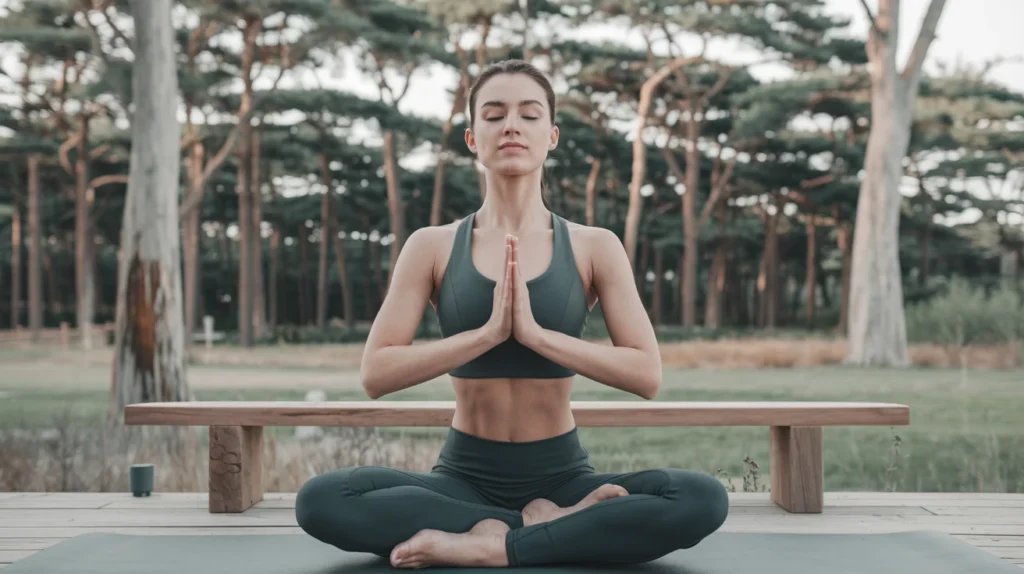Ever tried standing on one leg and wobbled like a newborn deer? You’re not alone. Tree Pose (Vrksasana) looks simple but packs a punch—it’s a yoga staple for building strength, balance, and mental clarity. Whether you’re a beginner or a seasoned yogi, mastering this pose can transform your practice.
In this guide, you’ll learn:
- Step-by-step instructions to nail Tree Pose (no flailing included).
- Little-known variations for injuries, tight hips, or wobbly days.
- Science-backed benefits—from stronger ankles to sharper focus.
- Real-world tips from yoga teachers and physical therapists.
Let’s root down and rise up—literally.
1. What Is Tree Pose (Vrksasana)?
Tree Pose, or Vrksasana in Sanskrit (Vrksa = tree, asana = pose), mimics the steady grace of a tree. It’s a standing balance pose that teaches you to stay grounded while reaching upward—both physically and mentally.
Why It Matters
- Foundational in Hatha Yoga and modern vinyasa flows.
- Improves proprioception (your body’s sense of position).
- Bridges movement and meditation—you can’t balance with a distracted mind!
Fun Fact: Ancient yogis used Tree Pose to test disciples’ focus before meditation.
2. How to Do Tree Pose Correctly: Step-by-Step

Alignment Checklist
- Start in Mountain Pose (Tadasana): Feet hip-width, spine tall.
- Shift weight to one leg: Press firmly into the floor.
- Place your foot:
- Beginner: Inner ankle or calf (avoid the knee!).
- Advanced: Inner thigh, toes pointing down.
- Hands: Prayer position at heart or branches overhead.
- Gaze: Fix on a point (a “drishti”) to stay steady.
Pro Tip: Squeeze a block between your thigh and foot to activate muscles.
Beginner Mistakes to Avoid
- Collapsing the hip of your standing leg (keep it level!).
- Holding your breath—slow inhales/exhales stabilize you.
- Rushing: Balance takes patience.
3. Tree Pose Variations for Every Body

| Variation | Best For | How-To |
| Foot on Ankle | Beginners, shaky balance | Rest sole lightly on inner ankle. |
| Chair Mod | Injuries, seniors | Sit, place foot on opposite thigh. |
| Eyes Closed | Advanced challenge | Remove visual cues for harder balance. |
Case Study: A 2018 study in the Journal of Physical Therapy Science found that older adults practicing Tree Pose with chair support improved balance by 30% in 8 weeks.
4. Why We Love Tree Pose: 5 Science-Backed Benefits
- Stronger Legs & Ankles: Engages glutes, quads, and calves.
- Better Posture: Aligns spine and shoulders.
- Mental Focus: Requires present-moment awareness.
- Stress Relief: Deep breathing activates the parasympathetic nervous system.
- Hip Flexibility: Gently opens the inner thighs and groin.
Quote from a Yogi: “Tree Pose taught me that balance isn’t about being still—it’s about adjusting with grace.” —Sarah, yoga instructor
5. Teaching Tree Pose: Cues for Instructors
- Visual Cue: “Imagine your standing leg is a tree trunk—rooted and unshakable.”
- Tactile Cue: “Press foot into thigh, thigh into foot for mutual support.”
- Humorous Reminder: “If you fall, just laugh and try again. Trees don’t judge!”
6. Preparatory & Counter Poses
Warm-Up Poses
- Mountain Pose (Tadasana): Find your center.
- Warrior II (Virabhadrasana II): Open the hips.
Cool-Down Poses
- Forward Fold (Uttanasana): Release the hamstrings.
- Seated Twist: Neutralize the spine.
7. Anatomy Deep Dive: Muscles Working in Tree Pose
Primary Muscles Engaged:
- Standing leg: Glutes, quadriceps, calves.
- Lifted leg: Hip abductors (outer thigh).
Joint Action:
- Ankle stabilization (prevents rolling).
- Pelvic alignment (no tilting!).
8. Putting Tree Pose into Practice
When to Use It:
- Morning routines to wake up the body.
- Before meditation to calm the mind.
Sequencing Ideas:
- Mountain Pose → Tree Pose → Warrior III → Forward Fold.
FAQs
Q: Why can’t I balance in Tree Pose?
A: Try shortening your stance (foot on ankle) or using a wall. Weak core or ankles? Strengthen them with exercises like toe lifts.
Q: Is Tree Pose safe for knee pain?
A: Yes—avoid placing foot on the knee. Opt for a chair variation or keep toes on the floor.
Q: How long should I hold it?
A: Start with 30 seconds per side, work up to 1–2 minutes.
Final Thought
Tree Pose isn’t just about standing on one leg—it’s a metaphor for resilience. Some days you’ll wobble; other days, you’ll soar. Keep practicing, and soon, you’ll stand tall like an oak, not a sapling.


